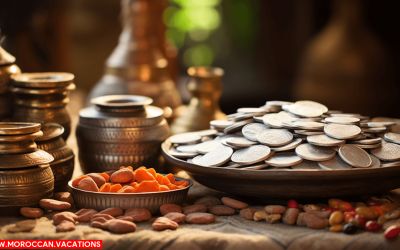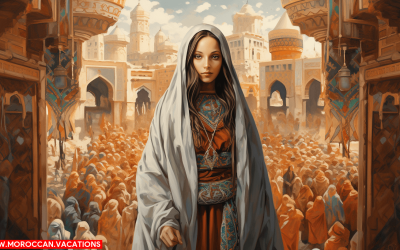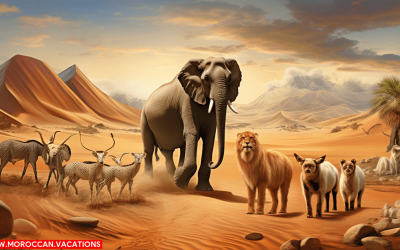Where Is the Capital of Morocco Located?
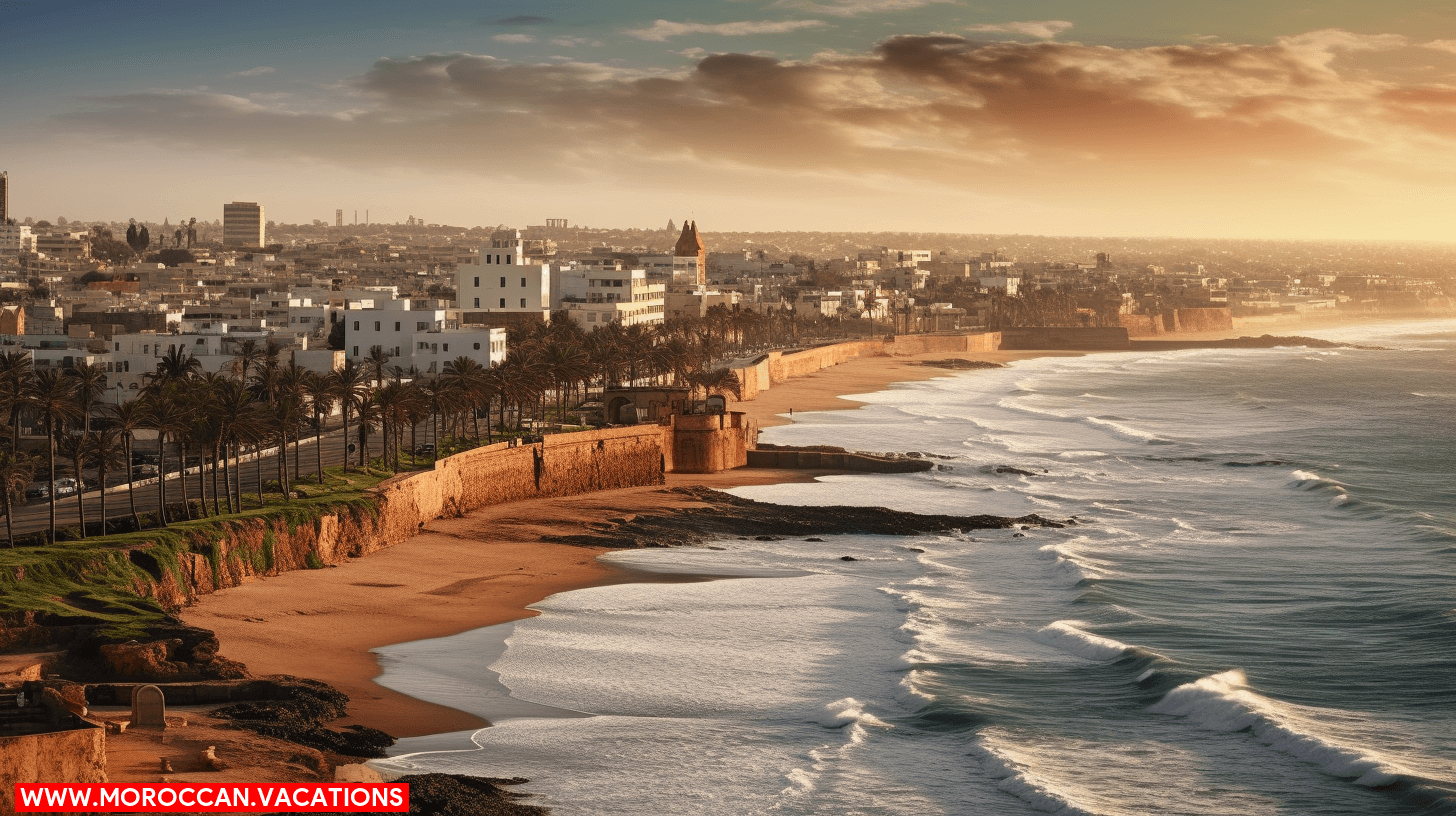

You might be thinking, “Why should I care about the capital of Morocco?” Well, let’s uncover the fascinating city of Rabat, the capital of Morocco, and its unique charm in North Africa. Get ready to explore the geographical marvel of this vibrant city, as we delve into its rich history, captivating attractions, and significant role in the country.
The capital of Morocco, Rabat, is located on the Atlantic coast in the northwestern part of the country. This historical city has been the capital of Morocco since 1912, chosen by the French protectorate to replace the former capital, Fez. Rabat’s strategic location along the coast and its proximity to other major cities make it an important political and economic center in Morocco.
Historical Capitals
So, where were the historical capitals of Morocco located? Fez, Meknes, and Marrakesh have all held the prestigious title at different points in history. Each city boasts its own unique blend of historical significance, cultural heritage, and architectural wonders, making them must-visit destinations for anyone interested in Morocco’s rich past.
Fez
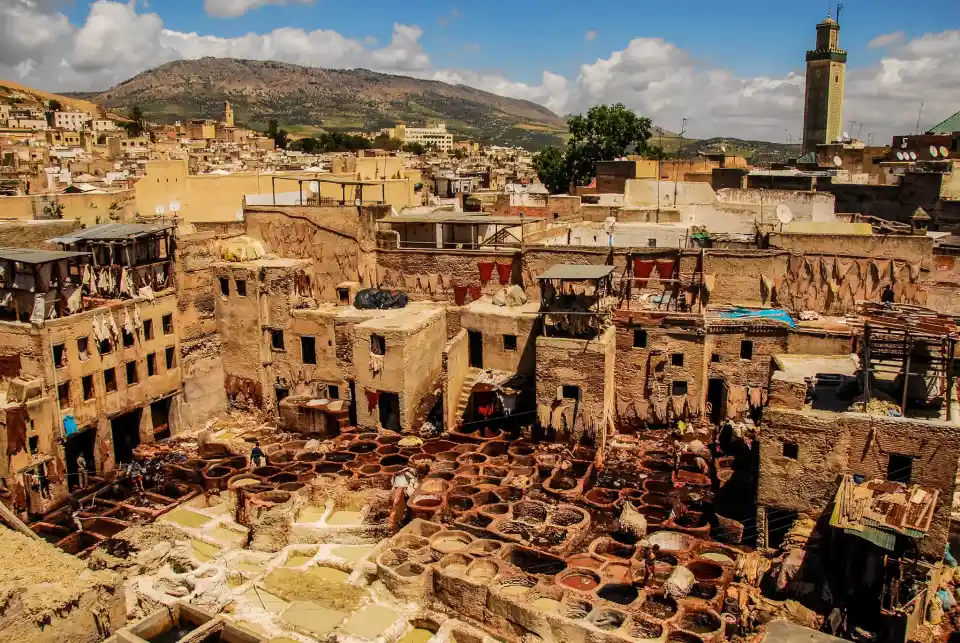

Photo by: @https://sunnyexcursion.com/fez-morocco/
Located in the northeastern part of Morocco, Fez has served as one of the historical capitals of the country. This city is renowned for its cultural heritage, ancient architecture,traditional crafts, culinary delights, and spiritual sites. Fez’s vibrant markets offer a wide array of goods, from colorful textiles to intricate metalwork. The city’s rich history and exquisite craftsmanship make it a must-visit destination for anyone fascinated by the allure of ancient civilizations.
Meknes
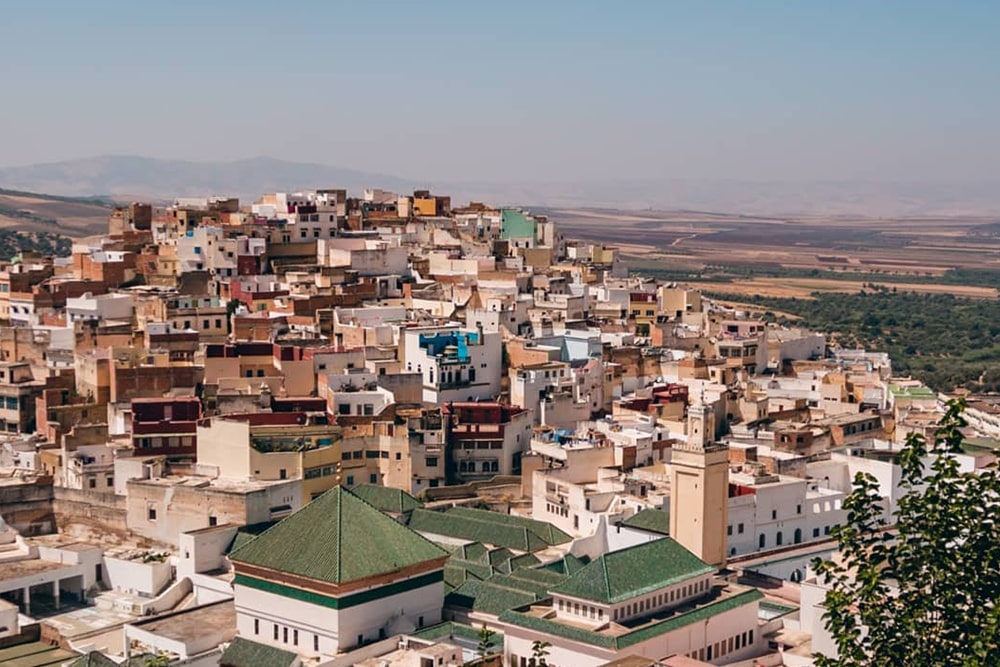

Photo by: @https://www.infostourismemaroc.com/en/city/meknes-morocco
Meknes, a city in northern Morocco, holds historical significance as one of the former capitals of the country. This city is surrounded by geographical features such as the Middle Atlas mountains and the fertile Saïss plain. Meknes boasts cultural heritage and architectural marvels, including the impressive Bab Mansour gate. It has modern developments while retaining its political significance and remains an educational hub, attracting students from all over the country.
Marrakesh
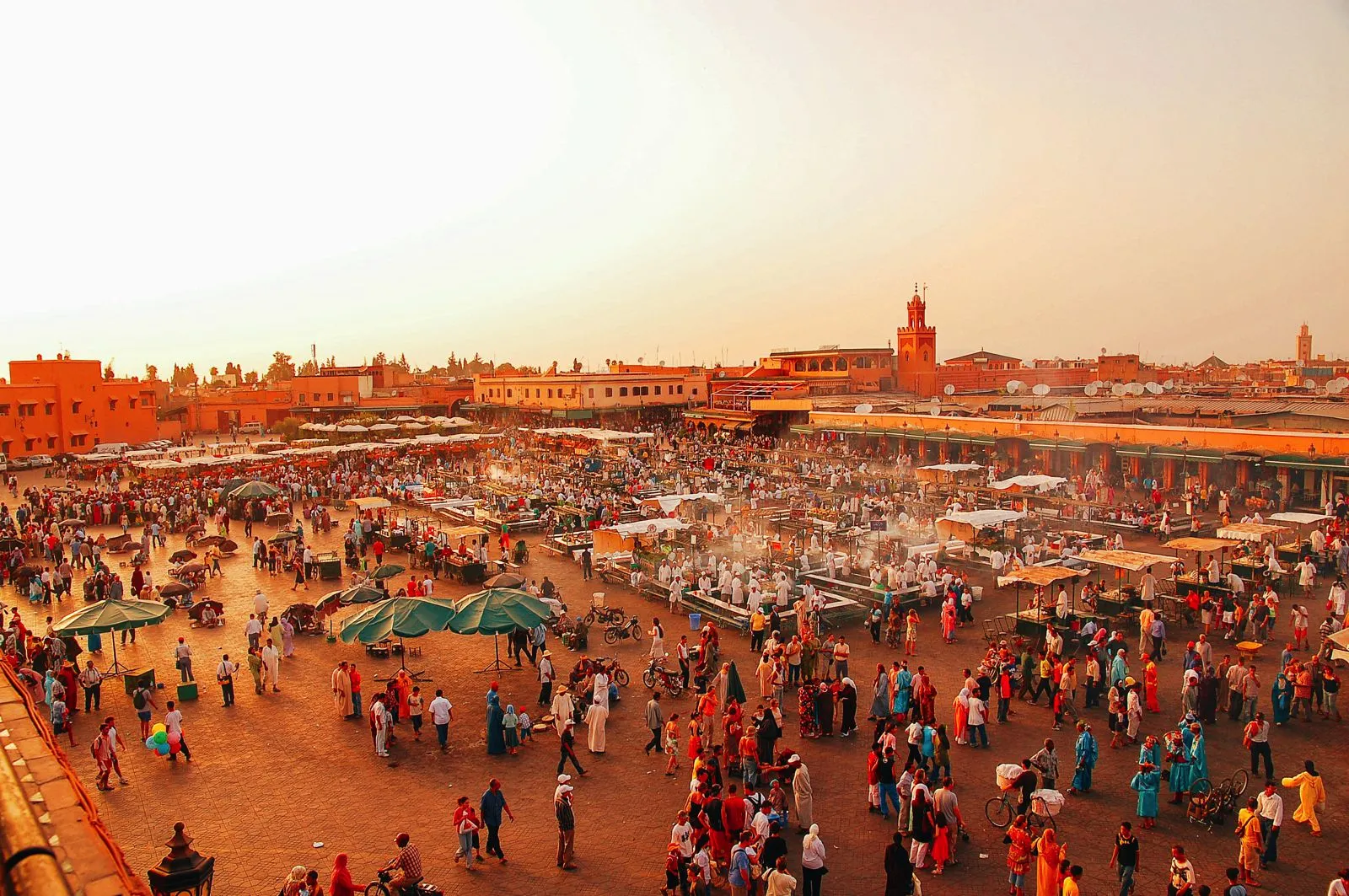

Photo by: @https://handluggageonly.co.uk/3-key-tips-successfully-negotiate-souks-marrakesh-morocco/
After exploring the historical significance of Meknes, you may wonder: “Where is the capital of Morocco located?” Marrakesh, nestled at the foothills of the Atlas Mountains, is a city of geographical wonders, cultural treasures, and architectural marvels. Its vibrant nightlife and festive celebrations make it an enchanting destination. Visitors can savor local cuisine, explore traditional crafts, and immerse themselves in the city’s rich cultural tapestry.
Current Capital
You can find the capital of Morocco in the city of Rabat. Situated on the Atlantic Ocean and the Bou Regreg River, Rabat’s geographical location has contributed to its historical roots and political importance. As the seat of the Moroccan government, it serves essential administrative functions and is home to the Royal Palace, government institutions, and foreign embassies. The city’s cultural significance is evident in its well-preserved historical sites, including the Kasbah of the Udayas and the Hassan Tower. Rabat’s urban development has seen the integration of modern infrastructure while maintaining its traditional charm. The city’s commitment to freedom and progress is reflected in its diverse neighborhoods, bustling markets, and vibrant arts scene, making it a compelling destination for those seeking both historical and contemporary experiences.
What Is the History of Rabat?
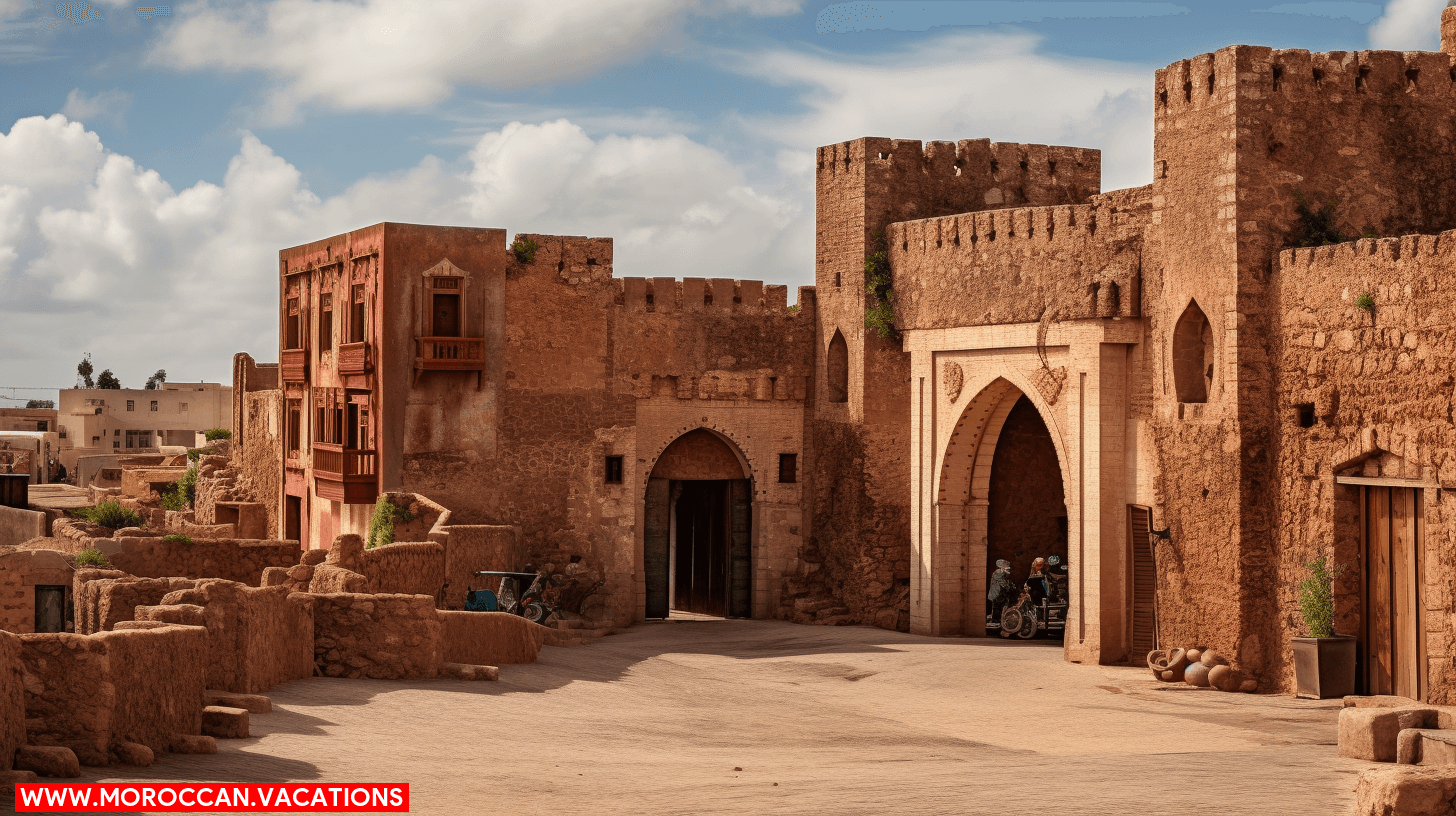

Rabat holds a rich historical significance as it has been inhabited since the 3rd century BC. During the 20th century, it served as the administrative center of the French Protectorate in Morocco. Today, it stands as the modern capital of Morocco and is home to several UNESCO World Heritage Sites.
Historical Significance
Rabat, the capital of Morocco, holds a rich historical significance dating back centuries. The city’s historical landmarks are a testament to its enduring legacy, shaping the region’s cultural heritage and influencing governance. The Kasbah of the Udayas, a UNESCO World Heritage site, stands as a prime example of Rabat’s historical significance, showcasing its architectural marvels and preserving its past. The city’s modernization impact has not overshadowed its historical importance, as it continues to honor its educational significance through institutions like the Mohammed V University. Rabat’s historical significance is deeply ingrained in its geographical importance, making it a crucial hub for trade and cultural exchange throughout the ages.
French Protectorate
Exploring the French protectorate’s history in Rabat reveals significant influences on the city’s development and cultural landscape. The French colonization of Morocco in the early 20th century marked a transformative period for Rabat. The city, previously under the Merinid dynasty and influenced by Spanish architecture, experienced extensive infrastructure development under the French rule. This included the construction of the Ville Nouvelle (New Town), which contrasts the traditional medina. The French Protectorate also brought significant changes to Moroccan governance, education, and urban planning, turning Rabat into an educational hub. Today, the remnants of this era can still be seen in the city’s architecture and layout, as well as in its role as the political and administrative center of Morocco. The French influence continues to shape Rabat’s identity and its significance in the 21st century.
Modern Capital
The modern capital of Morocco, shaped by the French Protectorate era, has evolved into a vibrant center of governance, culture, and education. Rabat, the political significance of which cannot be overstated, has undergone remarkable urban development and economic growth in recent decades. Its modern infrastructure reflects the nation’s commitment to progress, while historical landmarks stand as a testament to its rich heritage. The city’s cultural diversity, fostered by centuries of diplomatic relations, has made it a captivating mosaic of traditions and influences. Rabat’s significance on the world stage continues to grow, as it plays a pivotal role in international diplomacy. The city stands as a living testament to Morocco’s journey, exemplifying the harmonious blend of its rich history with its progressive vision for the future.
UNESCO World Heritage Sites
Nestled within the city of Rabat are several UNESCO World Heritage Sites, which offer a glimpse into the rich history and cultural significance of this vibrant capital. With its diverse architectural marvels and historical landmarks, these sites provide a captivating journey through the centuries of diplomatic relations and influences that have shaped the city. The Kasbah of the Udayas, a fortress dating back to the 12th century, showcases intricate Moorish design and breathtaking views of the Atlantic Ocean. The iconic Hassan Tower and the Mausoleum of Mohammed V stand as testaments to the city’s cultural heritage and architectural wonders. Preservation efforts and UNESCO designations have ensured the historical preservation of these sites, allowing visitors to immerse themselves in the captivating history of Rabat while admiring its architectural marvels.
What Are the Main Attractions in Rabat?
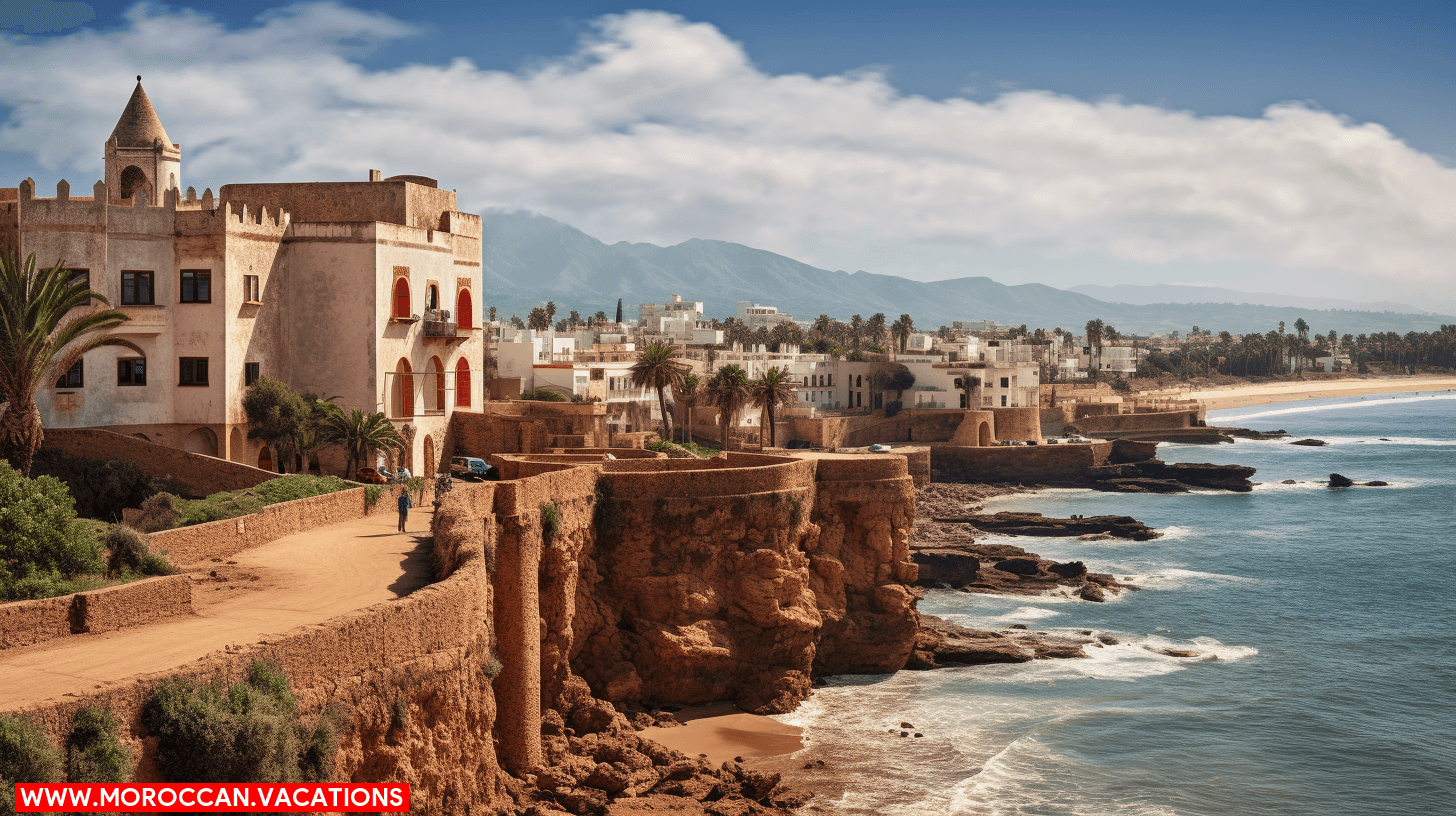

Rabat offers a wealth of historical and cultural attractions that will captivate your senses. The Kasbah of the Udayas is a picturesque fortress that overlooks the Atlantic Ocean, while the Hassan Tower and Mohammed V Mausoleum showcase stunning architectural grandeur. Don’t miss the tranquil Andalusian Gardens and the opulent Royal Palace, Dar al-Makhzen, during your visit to Rabat.
Kasbah of the Udayas
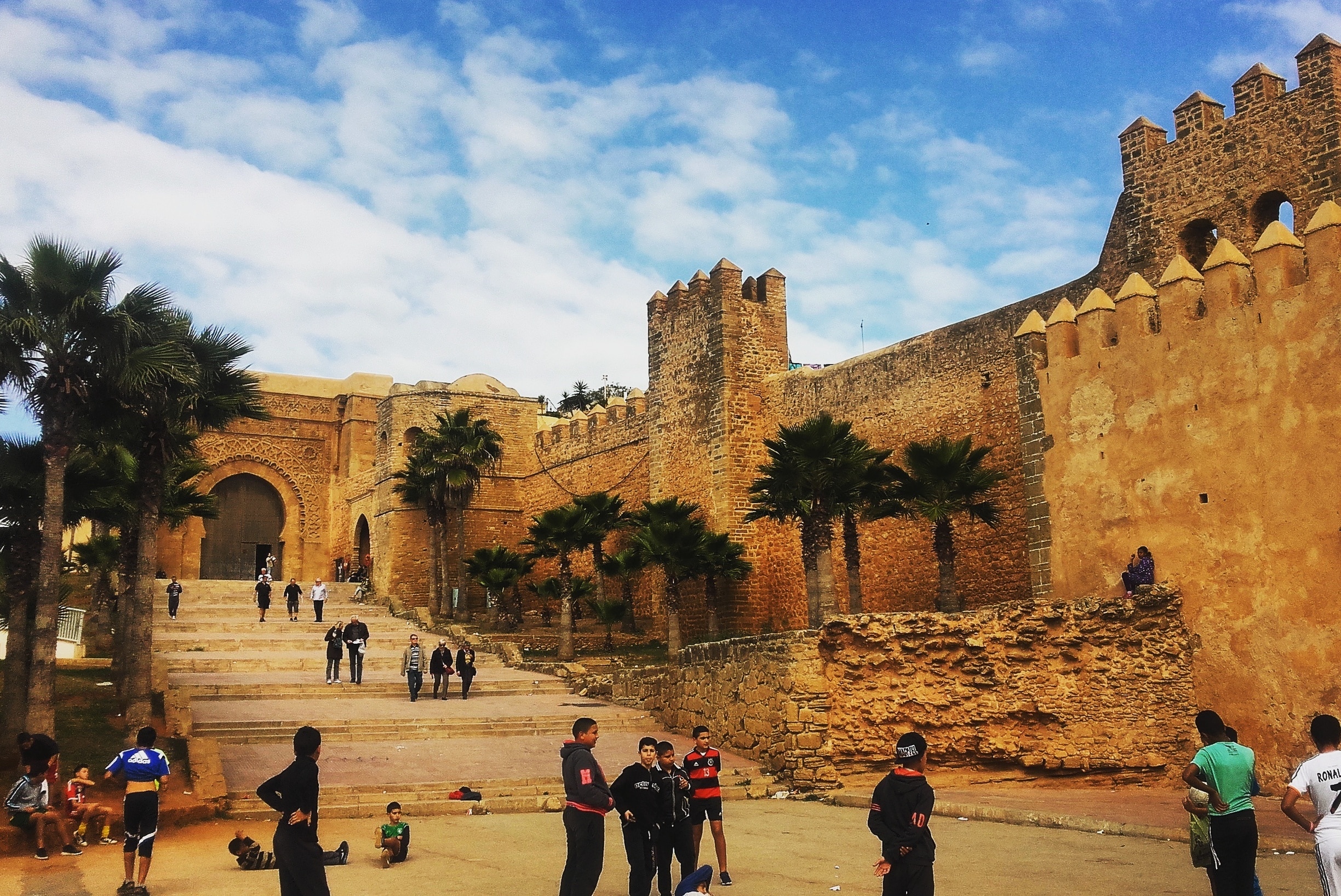

Photo by: @https://www.expedia.com/Kasbah-Of-The-Udayas.dx6279313
If you’re exploring Rabat, a must-see attraction is the Kasbah of the Udayas, a historic fortress that offers breathtaking views of the city and the Bouregreg River. The Udayas fortress, a UNESCO World Heritage site, boasts a rich history that dates back to the 12th century. The charming narrow streets and traditional white and blue buildings showcase the Udayas charm, reflecting Moroccan traditions and culture. As you wander through the Kasbah, you’ll witness the unique blend of Rabat’s architecture and coastal beauty, providing a captivating experience. Don’t miss the opportunity to visit the Andalusian Gardens within the fortress, where you can revel in serene surroundings and beautiful landscapes. Lastly, make sure to take in the stunning panoramic views from the cliff-top overlooking the Atlantic Ocean.
- UNESCO World Heritage site
- Charming narrow streets and traditional white and blue buildings
- Andalusian Gardens
- Panoramic views over the Atlantic Ocean
Hassan Tower
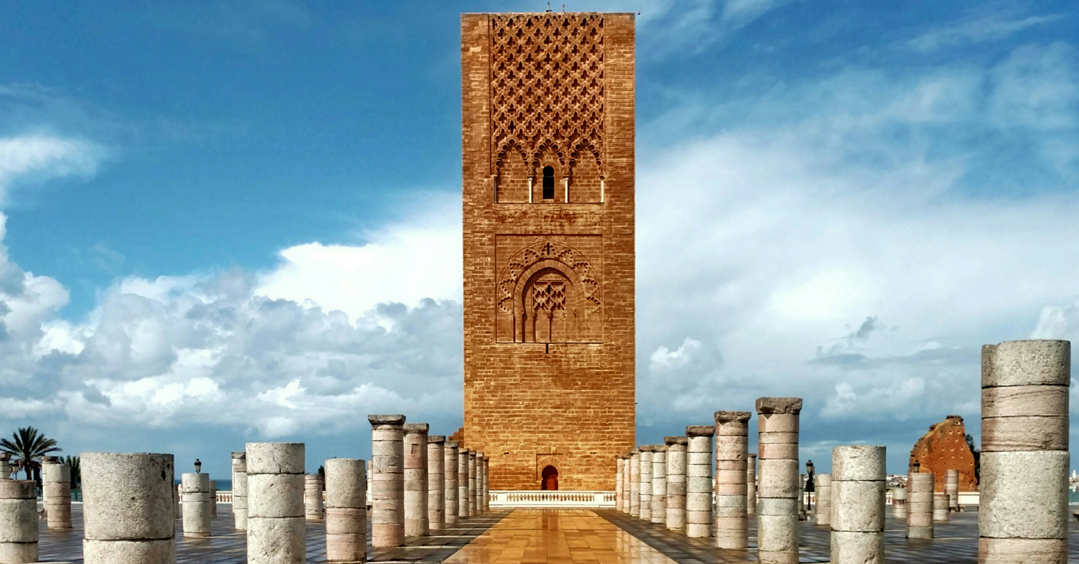

Photo by: @https://www.visitrabat.com/en/lieux/la-tour-hassan-2/
Where exactly can you find the impressive Hassan Tower, one of the main attractions in Rabat? The Hassan Tower, also known as Tour Hassan, is located in the heart of Rabat, Morocco. This architectural marvel, dating back to the 12th century, holds immense historical and religious significance. The tower was intended to be the minaret of the largest mosque in the world at the time, but construction was halted, leaving it unfinished. Despite this, the Hassan Tower remains an iconic monument and a cultural landmark, attracting visitors from all over the world. The site also includes the mausoleum of King Mohammed V, adding to its heritage preservation. As you explore this incredible structure, you’ll be immersed in the rich history and the enduring legacy of Morocco’s past.
Mohammed V Mausoleum
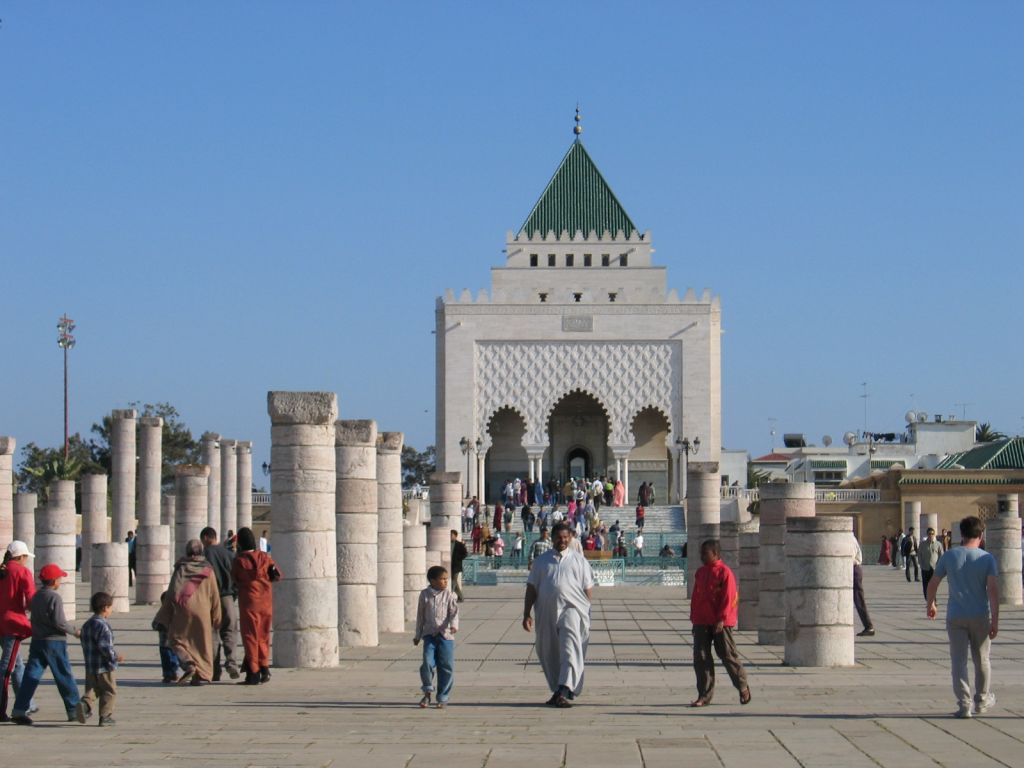

Photo by: @https://www.gpsmycity.com/attractions/mausoleum-of-mohammed-v-44615.html
Visiting Rabat, you can’t miss exploring the Mohammed V Mausoleum, a prominent attraction in the city. The mausoleum is an architectural marvel, blending Islamic and modernist styles, with its gleaming white silhouette and intricate zellij tilework. The site holds immense cultural and historical significance as the final resting place of King Mohammed V, a revered leader known for his role in Morocco’s independence. It is a religious pilgrimage for many Moroccans who come to pay their respects. The mausoleum also boasts royal connections, housing the tombs of King Hassan II and Prince Abdallah. Inside, visitors can admire artistic treasures, including a stunning dome adorned with exquisite chandeliers. Surrounding the mausoleum is the geographical beauty of the historic city and its serene gardens.
- Architectural marvels
- Cultural significance
- Historical significance
- Religious pilgrimage
Royal Palace (Dar al-Makhzen)
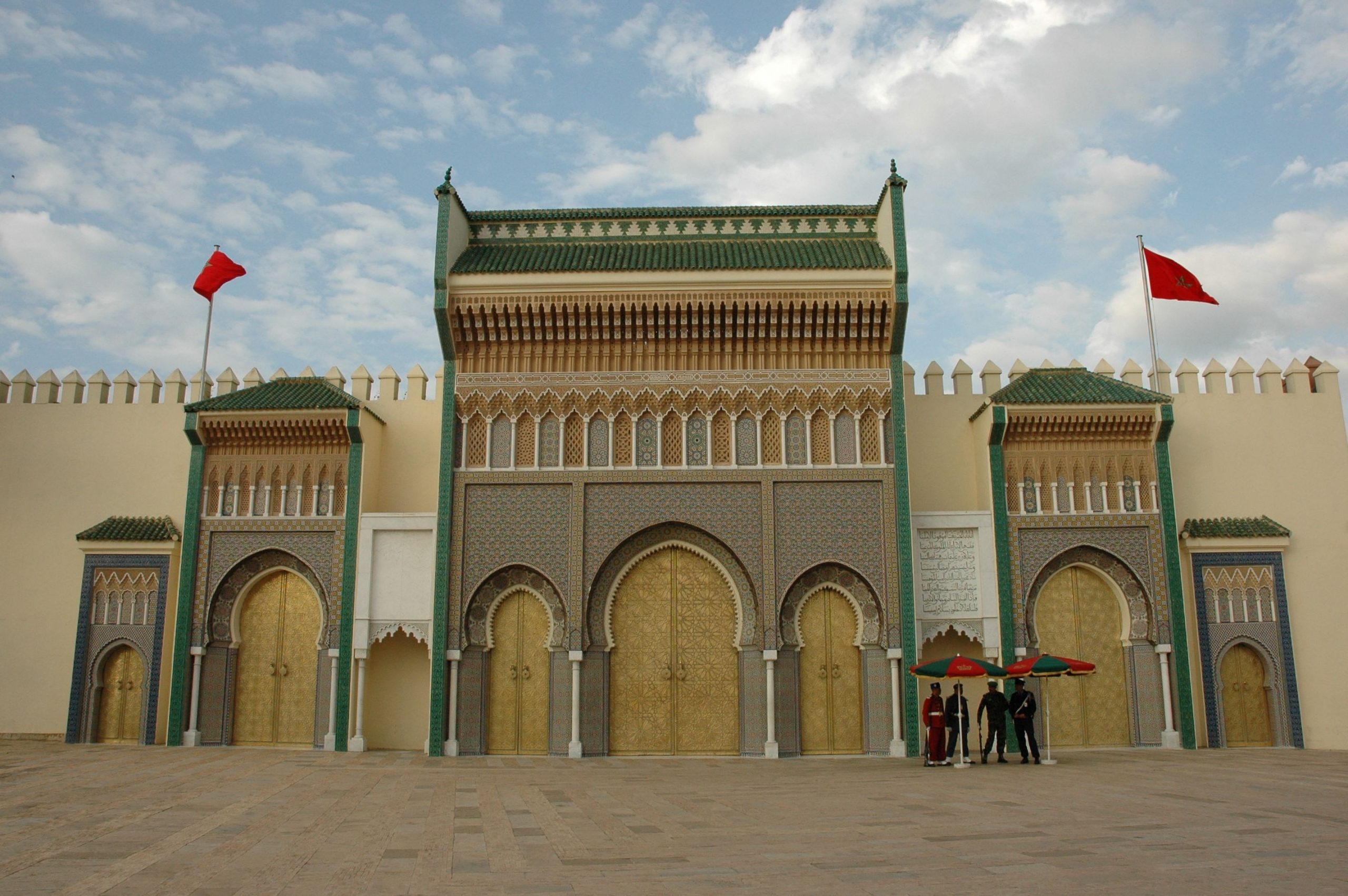

Photo by: @https://www.arrivalguides.com/en/Travelguide/Fes/doandsee/royal-palace-dar-el-makhzen-6626
The Royal Palace (Dar al-Makhzen) in Rabat is another must-see attraction, showcasing its grand architecture and serving as a symbol of Morocco’s rich royal heritage. This exquisite palace stands as one of the most significant architectural marvels in the region, reflecting both historical significance and cultural heritage. As a royal residence, it has been a political center, playing a pivotal role in Morocco’s governance and serving as a diplomatic hub. The palace’s geographical importance is undeniable, situated in the heart of Rabat, the capital city. Its ornate gates and intricate details are a testament to the craftsmanship and opulence that characterize Moroccan architecture. Visiting the Royal Palace offers a glimpse into the country’s regal past and its enduring influence on Morocco’s present-day political and cultural landscape.
Andalusian Gardens
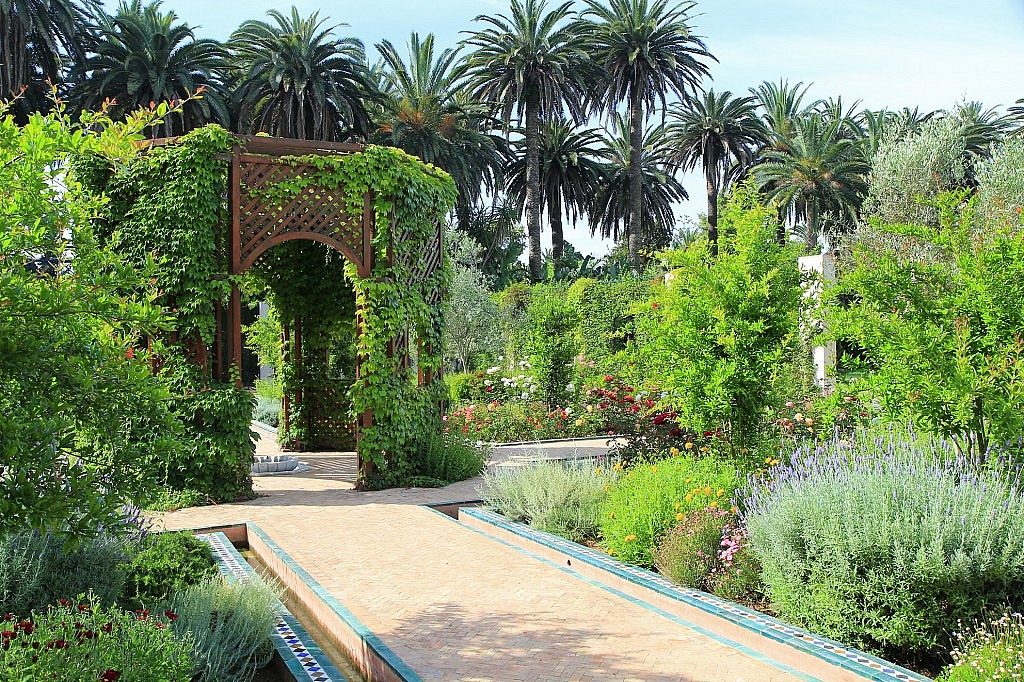

Photo by: @https://funci.org/the-andalusian-garden-of-rabat-inaugurated/?lang=en
If you’re looking for a peaceful and picturesque attraction in Rabat, one of the main highlights is the Andalusian Gardens, offering a serene escape amidst the bustling city. The Andalusian Gardens are an architectural marvel with their traditional design and rich cultural significance. As you wander through the gardens, you’ll be surrounded by exotic plants and beautiful fountains, creating a peaceful retreat from the urban hustle. The historical influence of the gardens adds an extra layer of fascination, making it a must-visit for history enthusiasts. The intricate details and serene ambiance of the Andalusian Gardens make it a perfect spot to unwind and immerse yourself in the beauty of this enchanting place.
- Traditional design
- Exotic plants
- Serene ambiance
- Historical influence
Rabat Medina
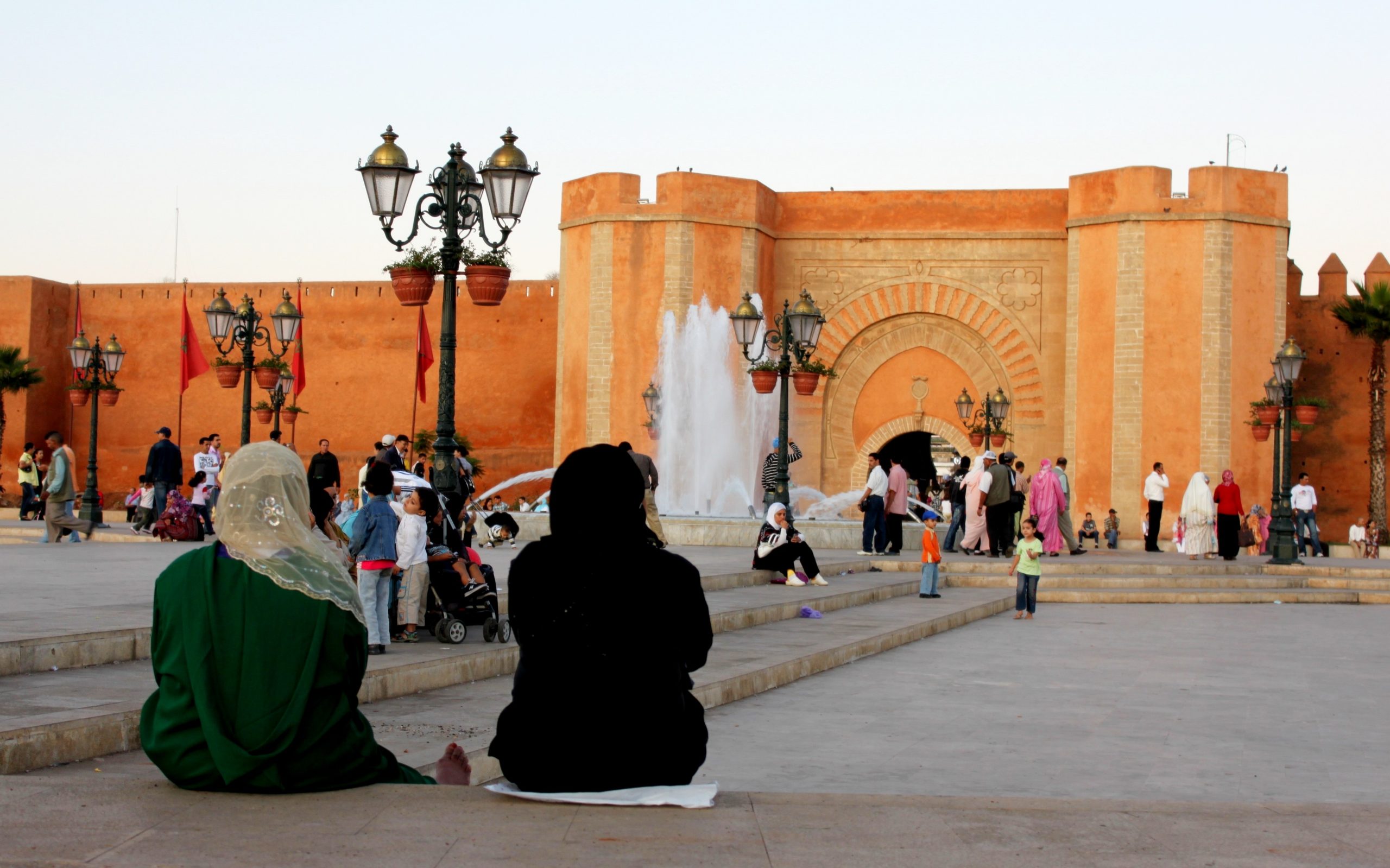

Photo by: @https://commons.wikimedia.org/wiki/File:Rabat_Medina,_Rabat,_Morocco.JPG
When you explore Rabat Medina, you will discover a vibrant and historic district that showcases the city’s cultural richness and architectural beauty. The Medina architecture reflects a blend of Andalusian and Moorish styles, offering a glimpse into the city’s urban development over the centuries. Traditional markets in the Medina are bustling with activity, offering a wide array of goods, from spices and textiles to artisan crafts. The cultural heritage of Rabat is preserved in the historical landmarks scattered throughout the Medina, such as the Kasbah of the Udayas and the Hassan Tower. As you wander through the narrow streets, you’ll encounter the tantalizing aromas of local cuisine, inviting you to savor the flavors of Morocco. Additionally, the Medina is renowned for its artisan craftsmanship, with workshops producing exquisite pottery, leather goods, and textiles.
Rabat Beach
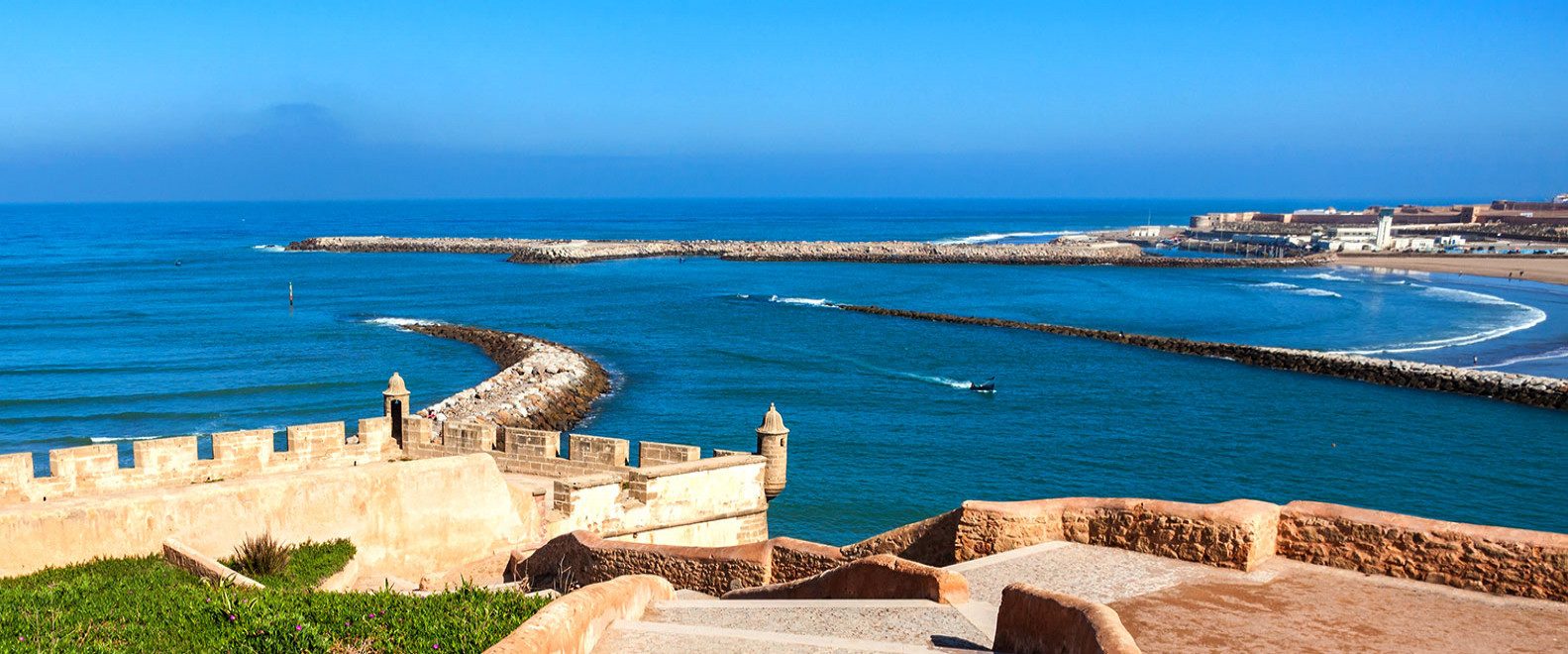

Photo by: @https://www.visitmorocco.com/en/travel/rabat/beach
Discover Rabat’s main attractions at the beach, including its scenic coastline and recreational activities. The Rabat Beach offers coastal beauty and stunning ocean views, making it an ideal spot for relaxation and leisure. Here are the main seaside attractions to enjoy:
- Beach Activities: Engage in a variety of water sports, such as surfing, jet skiing, and beach volleyball.
- Ocean Views: Enjoy breathtaking views of the Atlantic Ocean while taking a leisurely stroll along the waterfront charm.
- Relaxation Spots: Unwind at the beachfront cafes and restaurants, savoring the serene ambiance and delightful sea breeze.
- Waterfront Charm: Explore the lively promenade with its vibrant atmosphere, street vendors, and cultural performances.
Rabat Beach is a captivating destination that offers a perfect blend of natural beauty and recreational opportunities, ensuring a delightful experience for all visitors.
National Archaeological Museum
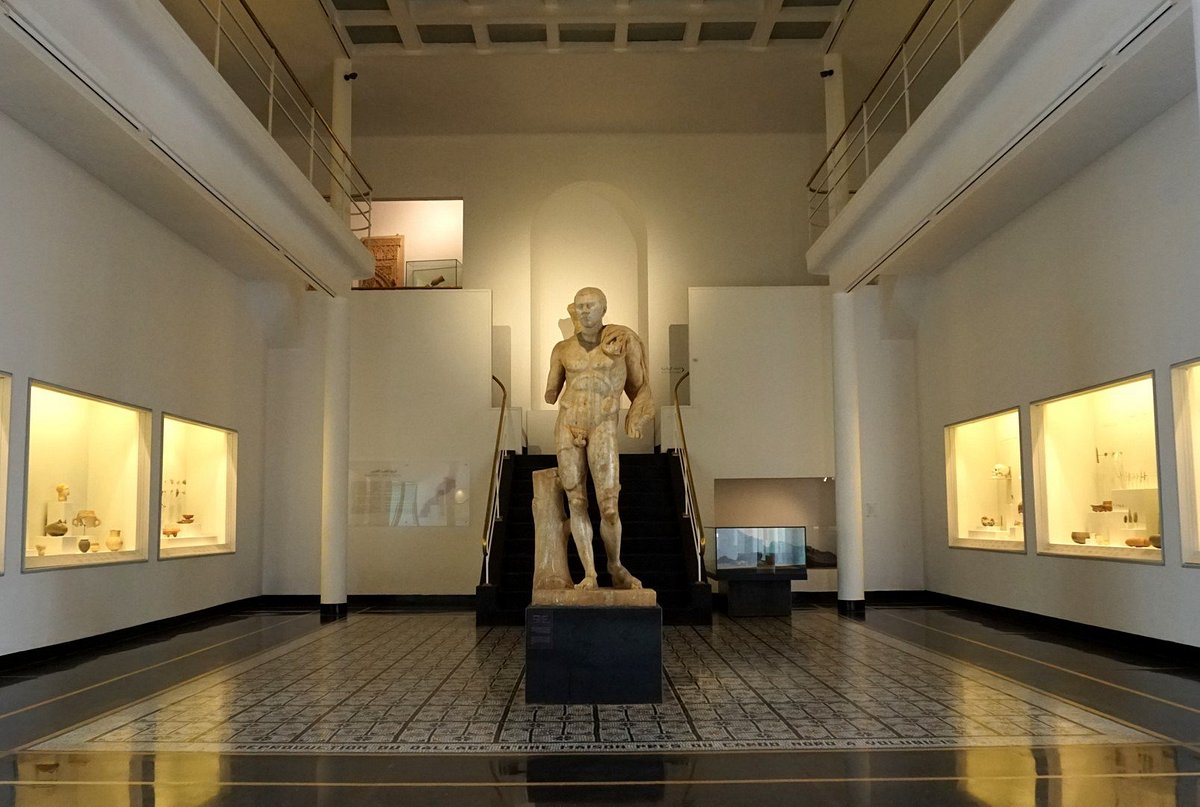

Photo by: @https://www.tripadvisor.com/Attraction_Review-g293736-d480530-Reviews-National_Archaeology_Museum-Rabat_Rabat_Sale_Kenitra.html
The National Archaeological Museum in Rabat houses a remarkable collection of ancient artifacts and historical treasures. As you step into this cultural haven, you’ll encounter a diverse array of archaeological treasures and historical relics that reflect Morocco’s rich national heritage. The museum exhibits a wide range of artistic masterpieces, each serving as a testament to the country’s vibrant history and cultural preservation efforts. From intricately designed pottery to intricately carved stone sculptures, the museum offers an immersive journey through Morocco’s past. It’s a place where you can witness the legacy of ancient civilizations and gain a deeper understanding of the country’s heritage. Whether you’re a history enthusiast or simply appreciate the beauty of ancient artifacts, the National Archaeological Museum is a must-visit destination in Rabat.
How Did Rabat Become the Capital of Morocco?
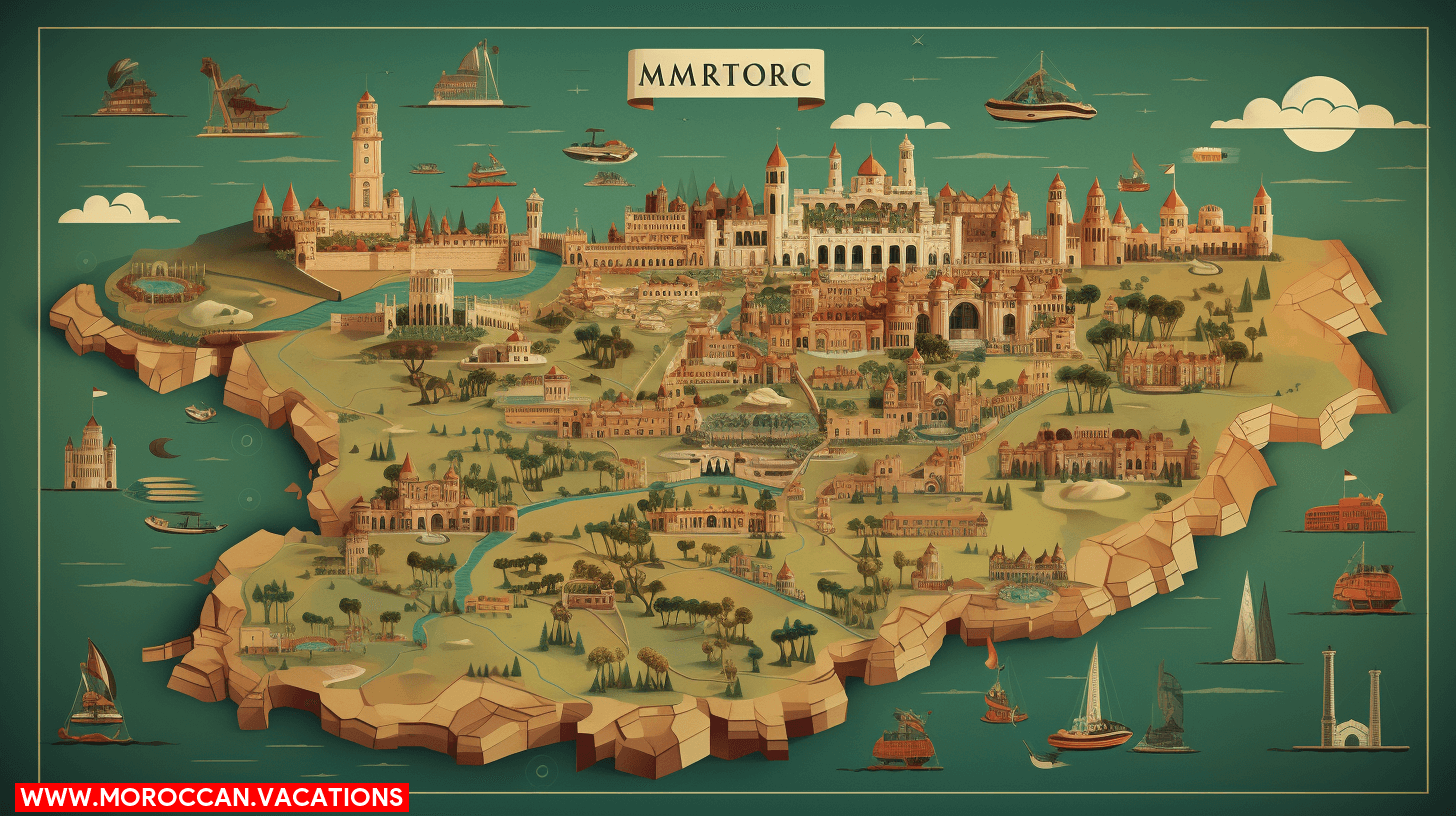

So, how exactly did Rabat become the capital of Morocco? Well, it all starts with its deep historical significance, particularly during the Merinid Dynasty and the subsequent shift of power. The influence of French and Spanish colonization also played a role, as did the modernization and infrastructure development that elevated Rabat’s status in Moroccan governance.
Historical Significance
Have you ever wondered how Rabat came to be the capital of Morocco? The historical significance of Rabat as the capital lies in its rich cultural heritage, political significance, and diplomatic relations. The city is home to historical landmarks that date back centuries and stand as testaments to its importance as a center of power and influence. Rabat’s architectural marvels, from the ancient Kasbah of the Udayas to the intricate Hassan Tower, showcase the city’s grandeur and historical prominence. As a political and administrative center, Rabat plays a crucial role in governing the country and maintaining diplomatic relations with other nations. Its geographical importance, situated on the Atlantic coast and being an educational center, further solidifies its position as the capital of Morocco.
Merinid Dynasty and the Shift
During the Merinid Dynasty, Rabat became the capital of Morocco, marking a significant shift in the country’s political center. This geographical shift was accompanied by a profound transformation in urban development, leading to the construction of architectural marvels that still stand today. The historical significance of this transition cannot be overstated, as it not only altered the political influence within Morocco but also contributed to a cultural transformation that is evident in the city’s heritage. The Merinid Dynasty’s decision to establish Rabat as the capital had long-lasting effects, shaping the city’s identity and role in Morocco’s history. The era saw a flourishing of artistic and architectural achievements, reflecting the dynasty’s power and influence. This pivotal moment continues to resonate, underscoring Rabat’s enduring importance in the country’s narrative.
Influence of French and Spanish Colonization
You’ll explore the impact of French and Spanish colonization on Rabat’s emergence as the capital of Morocco. The French colonization of Morocco, particularly during the 20th century, significantly influenced the country’s political landscape. Similarly, the Spanish influence, especially in the northern regions, also played a role in shaping Morocco’s historical legacy. The colonial impact of both nations led to cultural assimilation and the introduction of European administrative systems. This period had lasting effects, and even in the post-colonial era, the geopolitical implications of French and Spanish involvement continue to resonate. The convergence of these colonial forces contributed to the establishment of Rabat as the capital, reflecting the complex interplay of historical, cultural, and geopolitical factors in the region.
- French colonization
- Spanish influence
- Cultural assimilation
- Geopolitical implications
Modernization and Infrastructure Development
To understand how Rabat became the capital of Morocco, consider the modernization and infrastructure development that shaped its ascension. Over the past few decades, Rabat has experienced significant urbanization trends and infrastructure development, fueling its economic impact and growth. Technological advancements have played a crucial role in enhancing transportation systems and overall connectivity, making Rabat an attractive hub for business and investment. Sustainable growth has been a key focus, with city planning and design prioritizing green spaces and eco-friendly initiatives. The city’s infrastructure development has not only bolstered its position as the capital but has also improved the quality of life for its residents. As Rabat continues to evolve, its commitment to modernization and sustainable development solidifies its status as a thriving capital city in Morocco.
The Role of Rabat in Moroccan Governance
The establishment of Rabat as the capital of Morocco was a strategic decision made by the government to centralize political administration and governance. Rabat’s significance lies in its historical importance as it became the political center due to its strategic location and accessibility. The city’s architectural marvel is evident in its well-planned layout, incorporating modern infrastructure with historical landmarks. As a diplomatic hub, Rabat hosts numerous embassies and international organizations, playing a crucial role in global relations. Its cultural influence is undeniable, with a rich tapestry of art, music, and traditions that contribute to the city’s allure. This confluence of factors has solidified Rabat’s position as a vital hub for Moroccan governance and a testament to the country’s forward-thinking approach in shaping its political landscape.
Cultural and Educational Hub
Rabat’s emergence as a cultural and educational hub stems from its historical significance and the deliberate efforts of its inhabitants to foster a thriving intellectual environment. The city serves as a melting pot for cultural exchange, blending traditional practices with modern influences. Rabat hosts numerous academic institutions, offering a wide range of educational opportunities. Its artistic heritage is evident in the vibrant local art scene and the preservation of historical landmarks. The city’s strategic location has attracted scholars and intellectuals, further enriching its academic landscape. Rabat’s commitment to nurturing a diverse and inclusive educational environment has solidified its position as a leading center for learning and cultural exploration in North Africa. Whether you’re interested in history, art, or academia, Rabat provides a dynamic platform for intellectual growth and discovery.
UNESCO World Heritage Sites
As a traveler exploring Rabat’s UNESCO World Heritage Sites, you’ll discover the rich history and cultural significance that led to the city becoming the capital of Morocco. The architectural marvels within these sites reflect the historical significance of Rabat and its importance in cultural preservation. The city’s preservation efforts have garnered global recognition, making it a testament to Morocco’s commitment to conserving its rich heritage. The UNESCO World Heritage Sites in Rabat showcase the cultural diversity of the region and stand as a symbol of the nation’s historical roots. Exploring these sites offers a unique opportunity to delve into the past and appreciate the intricate tapestry of traditions that have shaped Morocco’s identity.
- Architectural marvels reflecting historical significance
- Global recognition for preservation efforts
- Cultural diversity showcased in the UNESCO World Heritage Sites
- Testament to Morocco’s commitment to conserving its rich heritage
Rabat in the 21st Century
If you’re curious about how Rabat became the capital of Morocco, delve into its 21st-century evolution. Rabat’s development in the 21st century has been marked by a focused approach to urban planning, leveraging technological advancements to modernize infrastructure and services. This has facilitated economic growth and attracted investments, positioning Rabat as a hub for innovation and development. Social reforms have contributed to a more inclusive society, promoting diversity and cultural exchange. Furthermore, the city has taken significant steps towards environmental sustainability, implementing green initiatives and eco-friendly policies. Rabat’s commitment to preserving its historical and cultural heritage while embracing progress has made it a model of successful modernization. The city’s journey in the 21st century reflects a harmonious blend of tradition and advancement, creating a dynamic and vibrant capital for Morocco.
What Makes Rabat a Significant City in Morocco?
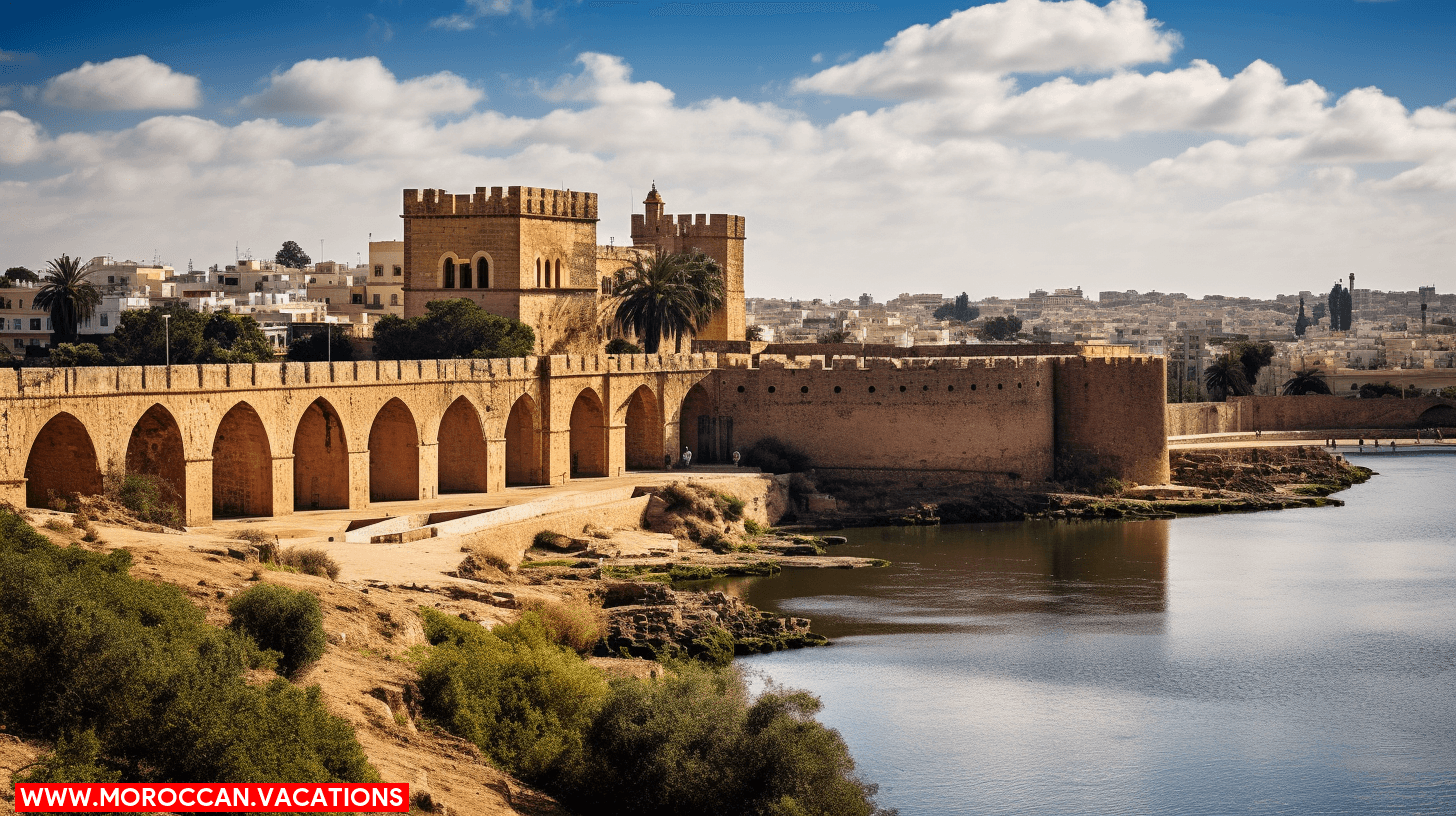

Rabat is the political capital of Morocco, serving as the seat of the government and the king’s residence. It is also a cultural hub, home to numerous museums, art galleries, and historic sites that showcase Morocco’s rich heritage. Additionally, Rabat plays a significant role in international diplomacy, hosting numerous embassies and diplomatic missions.
Political Capital
You’ll discover the significance of Rabat as the political capital of Morocco. Rabat’s political importance is undeniable, as it serves as the administrative center and governmental hub of the country. The city’s geopolitical influence is evident in its role as the capital city, shaping Morocco’s political landscape. Rabat’s status as the political capital signifies its pivotal role in decision-making and governance, making it a symbol of governmental authority and power.
- Rabat serves as the administrative center of Morocco, housing key government institutions.
- The city’s status as the governmental hub consolidates its influence in shaping national policies and strategies.
- Rabat’s role as the capital city signifies its significance in the political landscape of Morocco.
- The city’s political importance is underscored by its status as the seat of the country’s government and leadership.
Cultural Hub
As a cultural hub, Rabat offers a vibrant tapestry of artistic expression and historical significance. The city serves as a melting pot for cultural exchange, blending traditional customs with modern influences. Its social dynamics are a reflection of Morocco’s rich heritage, creating an atmosphere that celebrates diversity. Rabat’s architectural marvels, such as the Kasbah of the Udayas and the Hasan Tower, stand as testaments to its historical significance, drawing visitors from around the world. The city’s art scene is a testament to its cultural richness, with galleries, museums, and festivals showcasing a wide array of artistic expression. Whether exploring the ancient medina or engaging with contemporary art, Rabat provides an immersive experience that encapsulates the essence of Morocco’s cultural identity.
Diplomatic Center
With its array of international embassies and governmental institutions, Rabat’s status as a diplomatic center is a key factor in its significance within Morocco. The city plays a crucial role in diplomatic relations, serving as a hub for international meetings and diplomatic negotiations. Rabat’s international significance is highlighted by the presence of numerous diplomatic missions, showcasing the city’s global connections and political influence. The city’s role in facilitating diplomatic discussions and agreements underscores its importance not only within Morocco but also on the world stage.
- Rabat houses a multitude of embassies and consulates, fostering international relations.
- The city hosts a wide range of international meetings and conferences, contributing to global diplomacy.
- Rabat’s diplomatic missions represent its active engagement in international affairs.
- The city’s political influence is evident in its role as a center for diplomatic negotiations.
Architectural and Historical Significance
Rabat’s architectural and historical significance is underscored by its impressive array of well-preserved ancient structures and monuments, reflecting the city’s rich cultural heritage and historical importance. The city boasts architectural marvels such as the Kasbah of the Udayas, a UNESCO World Heritage site, and the Hassan Tower, a minaret dating back to the 12th century. These historical landmarks stand as testaments to Rabat’s cultural significance and urban development over the centuries. Additionally, the city’s architecture has been influenced by its colonial past, evident in the French-designed avenues and buildings. Rabat’s governance role as the capital city is also reflected in its architectural landscape, with grand administrative buildings and diplomatic quarters showcasing its importance in international relations. Overall, Rabat’s architectural and historical significance encapsulates the city’s enduring legacy and multifaceted identity.
Introducing Ayoub Karbachi, a brilliant wordsmith and curator of the Moroccan Vacations website. Prepare to immerse yourself in mesmerizing narratives and extraordinary moments, as he unveils the allure of Morocco's captivating destinations like never before.
Related Articles
What Is the Currency in Morocco?
Discover the current currency in Morocco with our comprehensive guide. Uncover essential information about Moroccan currency, exchange rates, and practical tips for managing your finances in this North African destination. Plan your trip with confidence and stay informed about the monetary landscape in Morocco.
What Language Do They Speak in Morocco?
“Discover the rich cultural tapestry of Morocco as we explore the question: ‘What language do they speak in Morocco?’ Uncover the linguistic diversity that defines this North African gem. From Arabic and Amazigh to French and Spanish influences, our guide navigates the linguistic landscape of Morocco. Gain insights into the importance of language in Moroccan society and travel prepared for a truly immersive experience. Unveil the answer to ‘What language do they speak in Morocco?’ and embark on a linguistic journey through this captivating destination.
What Animals Live in the Sahara Desert
Types of Animals Found in the Sahara Desert Photo by: @https://owlcation.com/stem/sahara-desert-animals Imagine yourself tracking the majestic dromedary camel across the vast, sandy dunes of the Sahara Desert. As you embrace the spirit of adventure, you're not alone...

